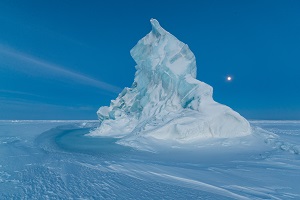Rosneft Sums Up Results of the Clean Arctic Project

Rosneft and Russian Arctic National Park summed up the results of a comprehensive project called Clean Arctic. Its goal was to study the impact of economic activities during the Soviet era on the Arctic ecosystems. Since 2019 experts have been exploring the islands of the Franz Josef Land archipelago. They were representatives of the country’s leading research institutes such as Research Center of Biotechnology RAS, V.V. Dokuchaev Soil Science Institute, Institute of Geography of the Russian Academy of Sciences and Faculty of Geology of Moscow State University.
Caring for the environment is an integral part of Rosneft’s activities. In order to achieve more in this area, Rosneft is constantly improving its approaches to environmental management and increasing the scale of its environmental activities.
The comprehensive programme for studying the external interferences on the Arctic ecosystem is being implemented for the first time in Russia. Assessing the scale and analysis of pollution in the reserve archipelago during Soviet times was one of the key tasks of scientists. Soil and ground pollution remained in places where fuel and lubricants were stored, which were brought to the region in large quantities to support the work of scientific, meteorological bases, and military facilities. For three years, employees of the National Park and the Institute of Geography of the Russian Academy of Sciences have been taking soil samples on the islands of Franz Josef Land archipelago and conducted an UAV survey of contaminated areas. They ended up discovering microorganisms capable of decomposing oil products at low temperatures. Those can be used in the creation of biopreparations for comprehensive cleaning of soils in the Arctic.
 They also identified the spatial and temporal dynamics of pollution and determined the mechanisms of migration of pollution. Scientists have concluded that the self-purification of soils by meltwater flushing is slow due to the low slope of the coastal zone surface and the low filtration properties of the soils. Natural washing out of the soil leads to redistribution of oil products within the coastal zone. In the course of the project, scientists have succeeded in identifying the environmentally optimal methodology for dealing with oil pollution in the Arctic wilderness.
They also identified the spatial and temporal dynamics of pollution and determined the mechanisms of migration of pollution. Scientists have concluded that the self-purification of soils by meltwater flushing is slow due to the low slope of the coastal zone surface and the low filtration properties of the soils. Natural washing out of the soil leads to redistribution of oil products within the coastal zone. In the course of the project, scientists have succeeded in identifying the environmentally optimal methodology for dealing with oil pollution in the Arctic wilderness.
The joint project of Rosneft and the Russian Arctic National Park is a follow-up of the works to eliminate the Soviet environmental damage performed from 2012 through 2017 on the Franz Josef Land islands and within the national park on Novaya Zemlya.
Note for Editors:
The Russian Arctic National Park is the northernmost and one of the largest strictly protected areas in Russia. The area size is 8.8 million hectares. It was created on June 15, 2009. The park is located on two polar archipelagos in the Arkhangelsk region: the northern part of Novaya Zemlya and Franz Josef Land archipelago. There are no permanent residents on the territory. The SPA is home to seven animal species listed in the Red Book of Russia and the International Red Book, including the polar bear, the Atlantic walrus, the narwhal and the bowhead whale.
Rosneft
Information Division
July 15, 2022